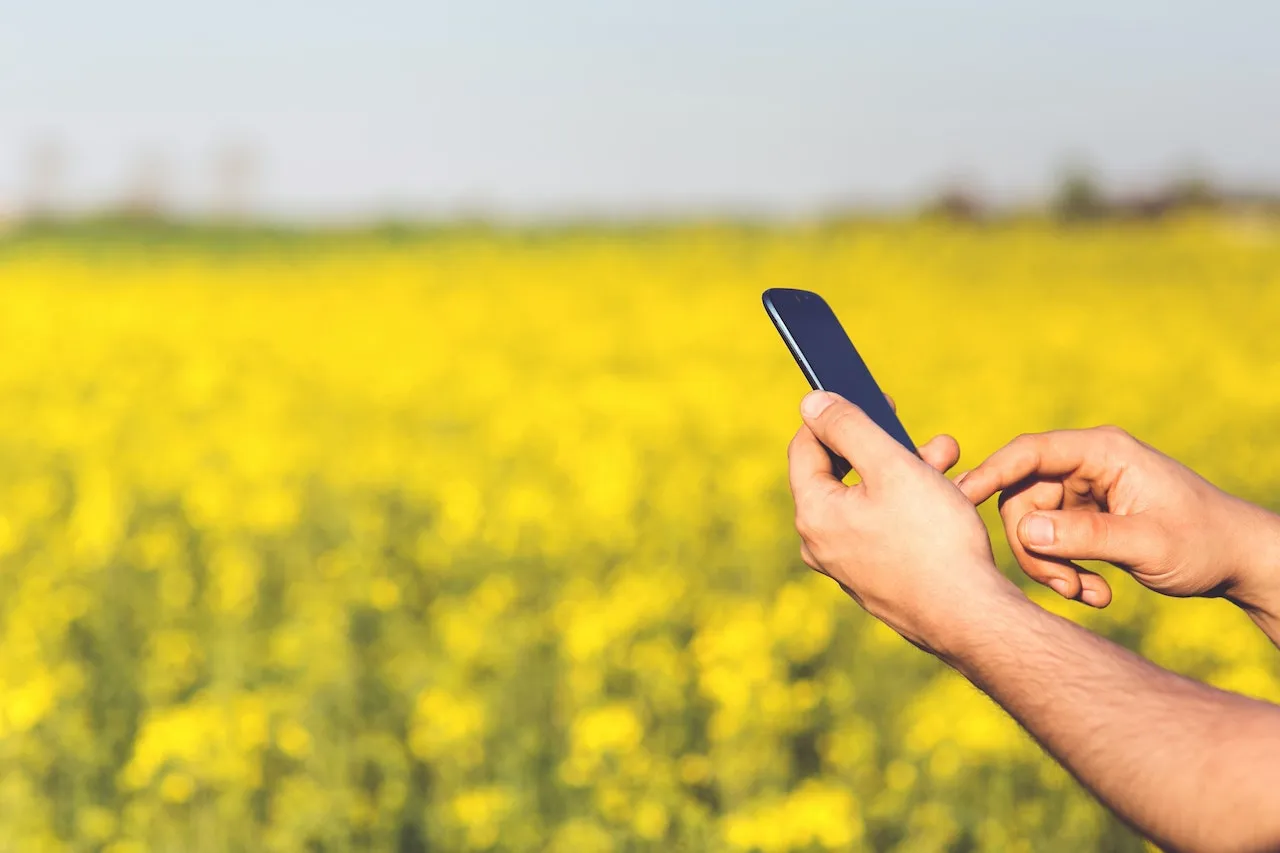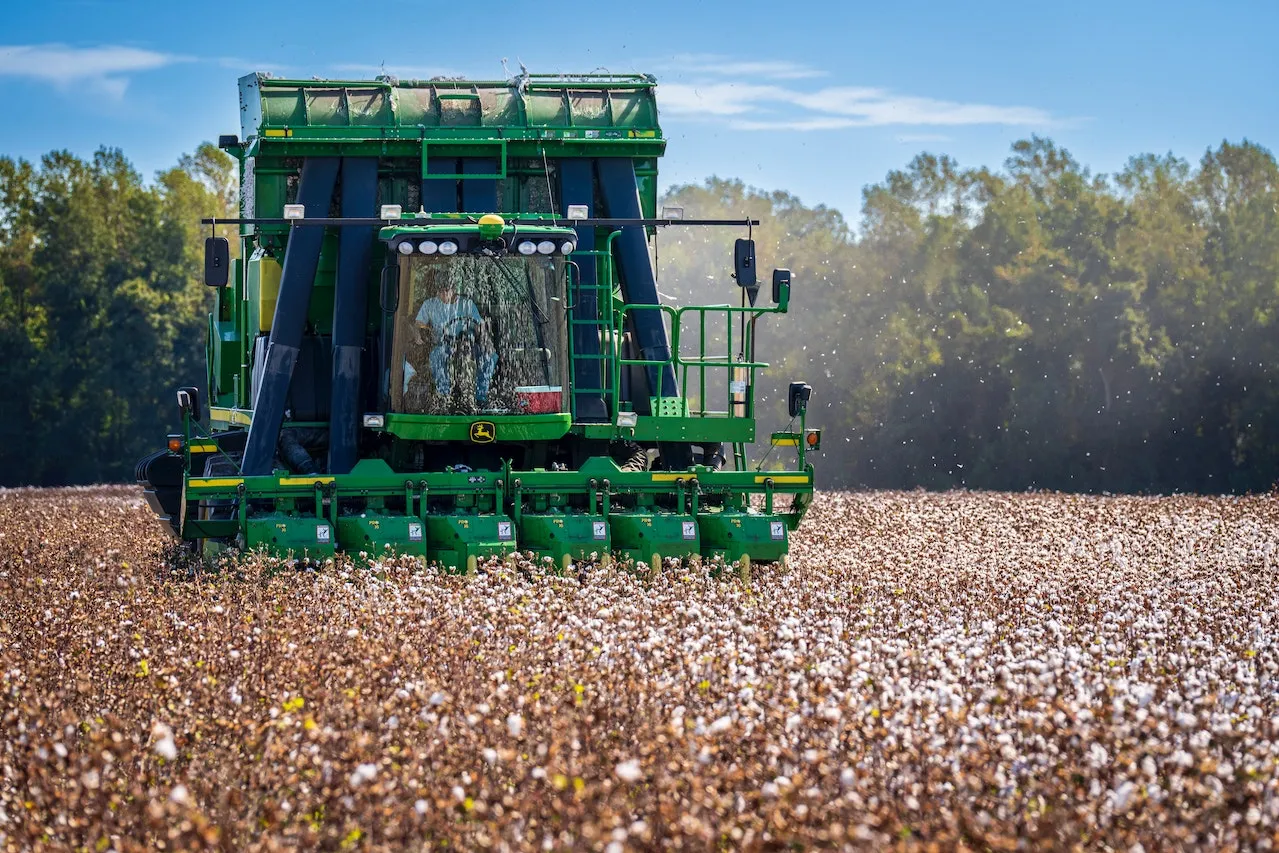A vast enterprise, agriculture is in charge of providing food and making money. Over the next 50 years, the world’s population is expected to grow by more than 3 billion people, which would significantly increase the demand for dependable food supply. While conventional farming techniques have assisted society in meeting this problem, they might not be able to do so in the future as the population continues to expand.
Automation
The requirement for food increases along with the growth of the global population. Agriculture must develop and adapt to new technology and practises in order to meet this need. The application of gene editing, blockchain, and other cutting-edge technology in agriculture is one area of innovation with a lot of potential. Farmers and food producers are able to develop crops that are more resilient, nutrient-dense, and sustainable by utilising cutting-edge methods like CRISPR gene editing, blockchain traceability, and big data analytics.
Artificial Intelligence
AI may assist farmers in improve their agricultural practises by providing real-time information on their crops and animals. Drones, sensors, and satellite imaging can collect data on soil moisture, temperature, crop health, and animal behaviour, allowing farmers to make more informed irrigation, fertilisation, and pest management decisions. This technology may also analyse historical data to forecast future outcomes such as weather patterns, soil conditions, and crop yields, allowing farmers to make more educated planting, harvesting, and marketing decisions. Furthermore, AI may help with monitoring animal health and behaviour, optimising feeding regimens, and tracking products and livestock from farm to market, increasing transparency and reducing waste. It has the ability to alter agriculture and make it more efficient.
The Internet of Things
Smart farming is highly based on IoT, which reduces the need for farmers and producers to perform manual labour while increasing production in every way imaginable. This type of farming is an effective and sustainable form of farming and food production. It is a means of incorporating linked gadgets and cutting-edge technology into agriculture.
With modern agricultural trends dependent on agriculture, the Internet of Things has provided enormous benefits such as efficient water utilisation, input optimisation, and many more.
IoT-based smart farming enhances the whole agricultural system by monitoring the field in real time. With the use of sensors and interconnectivity, the Internet of Things in Agriculture has not only saved farmers’ time but also reduced resource wastage such as water and power. These sensors monitor a variety of characteristics such as humidity, temperature, soil, and so on and deliver accurate real-time data.
Big Data and Analytics
Big data in agriculture is completely dependent on the utilization of information technology, and data analytics to provide farmers key information, which are helping them to increase crop yield. By using big data, it may be possible to increase production in some industries or collect regional data on the farming sector. This crucial information is produced using data mining techniques, which find patterns in vast volumes of data and condense them into useful formats. Modern technologies like artificial intelligence and machine learning are used in conjunction to big data approaches to convey important data to farmers and adjacent industries, such as the fertiliser industry.
Drones and Robotics
The development of agriculture drones and robots appears to be brightening the future of farming more than ever. Modern agricultural processes like precision agriculture increase crop yields while lowering cultivation expenses and increasing profitability.
Agricultural drones and robots are becoming more popular in the farming vertical as farmers adopt new farming techniques. Farmers may now inspect and monitor crops, examine and analyze soil samples, and spray pesticides and fertilizers on the soil using agricultural drones and agribots. Drones and agricultural robots help farmers make more informed decisions about planting and harvesting schedules as well as other challenges like irrigation.
3D Printing
Technology plays a significant role in agriculture, streamlining several operations ranging from food production to transportation to marketing. The integration of 3D printing technology into agriculture can significantly enhance farmers’ operations. 3D printed equipment can be customized to suit particular requirements for crop cultivation. Furthermore, it empowers users, such as farmers, to create or print on demand, allowing them to fabricate high-quality equipment and enhance planting techniques quickly. As a result, remote locations benefit from the capacity to print devices on demand, which saves both energy and money.
Tractors and harvesters, as well as seeders and fertilizer spreaders, are important components in food production. According to Skid Heaven specialists, traction is important to farmers because it increases output while decreasing fuel use. It also increases safety by preventing slips and slides, which could injure the operator or destroy the field.
Alternative Farming Methods
Alternative agriculture refers to producing systems that do not employ traditional methods. They intend to adhere to the principle of agroecology. These systems strive for long-term success while optimizing all agroecosystem resources. Alternative agriculture encompasses a wide range of systems (organic agriculture, sustainable agriculture, integrated agriculture, agroforestry, permanent agriculture, etc.). These systems, despite their variations, share common values. Its technological itineraries were originally conceived as strategies to safeguard the environment, specifically soil and water. They also aim to reduce or eliminate the use of herbicides and mineral fertilizers through biological control and organic fertilizers and amendments, respectively. They seek to follow natural cycles by adopting agricultural rotations, cover crops, and no-tillage, among other things. These systems attempt to match their environments.
Farmers that pursue alternative agriculture frequently attempt to enhance their overall living conditions. They also want to be a part of the local social network and sell high-quality products. By using alternative agriculture the farmers can make a profit while without impacting the environment and people. They develop on-farm processing, producer-to-consumer schemes, agrotourism, and other initiatives to attain these objectives.
Precision Agriculture
Precision farming is a practice where farmers use satellite imagery or other remote sensing tools to monitor their fields and track their crops’ health over time. This allows them to determine when fertilizer is needed or pesticides are needed. It also helps them reduce waste from over spraying chemicals because they can see exactly what needs to be sprayed where on each individual plant rather than just spraying everything all at once (which can damage plants). Precision farming has been around for decades but has only recently seen an uptick in popularity thanks to advancements in technology such as drones
Gene Editing
Gene editing has been utilized successfully to develop high-yield crops and also with more disease resistance and containing nutritional content comparative than traditional crops, such as soybeans and maize. Additionally, gene editing can be used to generate drought-resistant plants or plants that can withstand high concentrations of salt or insecticides. Development in this field will help farmers to produce more nutritious food at a lesser cost, which in turn help in the reduction of global malnutrition rates.

Lab-Grown Meat and Vegan Alternatives
Lab-grown meat and vegan alternatives are two rising agricultural movements aimed at lowering animal agriculture’s environmental effect, increasing animal welfare, and addressing the growing demand for sustainable and ethical food.
Lab-grown meat, also known as cultured meat, is created by nurturing animal cells in a lab and then growing them into muscle tissue. Technology permits meat to be produced without the need for animal killing, lowering the environmental effect of meat production and enhancing animal welfare. Memphis Meats, SuperMeat, and Future Meat Technologies are among the companies currently working on lab-grown meat.
Vegan alternatives, on the other hand, are plant-based goods that are designed to taste and feel like meat but do not contain any animal components. These goods, which are often produced from soy, pea protein, and wheat gluten, are intended to appeal to both vegetarians and meat eaters. Beyond Meat, Impossible Foods, and Gardein are some popular vegan alternative brands.
Blockchain Traceability
The use of blockchain in agriculture can help to improve food safety and traceability, reduce fraud and waste, increase the efficiency and transparency, and provide greater security for farmers and consumers alike. Importantly this technology enables people to share information securely without having any third party involved like banks or governments needed for transactions.
Smart Irrigation Technology
The agriculture industry has undergone a transformation because to new technology like smart irrigation, which boosts crop yields while using less water and cultivating land more effectively. Advanced sensors, real-time data processing, and automation are used in smart irrigation systems to offer farmers with exact information on soil moisture levels, weather conditions, and water requirements.
The smart irrigation technology can dramatically cut water consumption while increasing agricultural yields since plants receive the correct amount of water and nutrients for healthy growth. Furthermore, smart irrigation systems can help farmers save money on labor expenditures while lowering the danger of over- or under-watering their crops, which can result in crop loss or reduced quality.
Sensors in smart irrigation systems often evaluate soil moisture levels, weather conditions, and other critical data that affect plant development and water requirements. These sensors may be linked to a central control system, which analyses the data and, depending on the results, offers suggestions for irrigation scheduling and water application rates.
Agricultural Apps and Software Programs
Growing in popularity in the agriculture sector, agricultural software and applications offer farmers and other stakeholders a number of advantages including improved productivity, better decision-making, and higher crop yields. Here are a few of the most popular agricultural software and app examples:
Farm management software:
By monitoring crop growth, field conditions, labour and equipment utilisation, and other crucial factors that affect productivity and profitability, these programmes assist farmers in managing their operations more effectively. Popular farm management software programmes include Agworld, Granular, and FarmLogs.
Applications for monitoring the weather and climate:
These apps give real-time weather and climate data, enabling farmers to make more informed decisions about planting, harvesting, and other essential activities. Several well-known weather and climate monitoring applications include Weather Underground, NOAA, and The Weather Channel. Applications for agricultural scouting help farmers spot and take care of pests, diseases, and other issues that could be harmful to the health and yield of their crops. Some well-known crop scouting applications are Scoutify, CropTrak, and FarmQA.
These programmes offer farmers real-time information and analysis on market circumstances, commodity prices, and other elements that may have an influence on their profitability. Popular market analysis software includes Farm Market iD, AgriCharts, and AgriSync.
Applications for irrigation management:
These apps provide real-time information on soil moisture levels, weather conditions, and water use to help farmers operate their irrigation systems more effectively. Some well-known irrigation management applications are FieldNET, Hortau, and CropX.
In general, farmers and other stakeholders may benefit greatly from the insights and tools that agricultural applications and software programmes can offer by optimising their operations, boosting output, and increasing profitability.
Takeaway:
In this article you will come to know about future of agriculture due to rise of new technologies and robots.
#FutureAgriculture #TechInFarming
